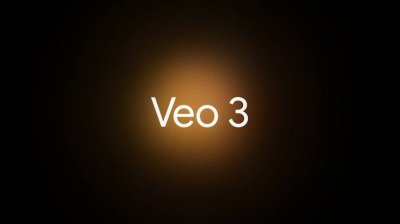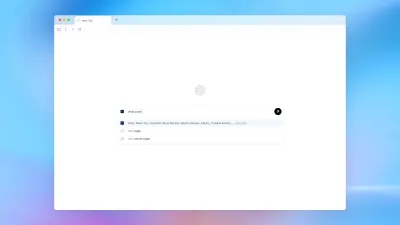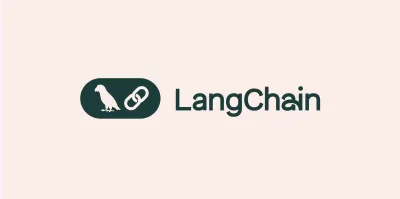Google's Veo 3 Expands AI Video Generation Capabilities with Vertical Video and 1080p Support
By: @devadigax

Google has significantly boosted the capabilities of its AI video generation tool, Veo 3, adding support for vertical video formats and a higher 1080p resolution. This update, announced on Google's developer blog, addresses a crucial need in today's mobile-first world, where short-form vertical videos dominate platforms like TikTok, Instagram Reels, and YouTube Shorts. The move positions Veo 3 as a more versatile and competitive solution in the rapidly evolving AI video generation landscape.
The addition of vertical video support is particularly significant. While horizontal videos remain prevalent, vertical content is increasingly preferred by viewers consuming videos on smartphones. This shift reflects a change in viewing habits, with users often consuming content while on the go or multitasking. By catering to this trend, Google makes Veo 3 more appealing to creators targeting these platforms and ensuring greater engagement with their audience.
The upgrade also includes a bump in resolution to 1080p. This improvement offers a noticeable leap in visual quality compared to lower resolutions, resulting in crisper, more detailed videos. The enhanced resolution is critical for professional-looking content, making Veo 3 a more attractive option for businesses and content creators aiming for a polished final product. This enhanced clarity is especially vital for detail-oriented videos, such as product demonstrations or tutorials.
Google also highlighted Veo 3 Fast in its announcement. This version, as its name suggests, prioritizes speed and affordability, making AI video generation accessible to a broader range of users. While specifics on the performance differences between Veo 3 and Veo 3 Fast were limited in the announcement, it's likely that Veo 3 Fast offers a trade-off between speed and potentially slightly lower video quality or feature set. This strategy is a common tactic in the AI software market, allowing users to choose the balance of speed, quality, and cost that best fits their needs and budget.
The implications of this update are far-reaching. The ability to generate high-quality vertical videos at 1080p opens up new possibilities for content creators across various sectors. Marketing teams can now produce engaging short-form ads tailored for social media, educators can create easily digestible educational content, and filmmakers can explore new creative avenues. The accessibility of Veo 3 Fast further democratizes AI video generation, enabling smaller businesses and individuals with limited resources to leverage the power of this technology.
This move by Google also intensifies competition within the burgeoning AI video generation market. Companies like RunwayML, Descript, and Synthesia are already strong players, offering various features and capabilities. Google's enhancements to Veo 3, however, solidify its position as a major contender, particularly with its integration into the wider Google ecosystem. This integration could provide significant benefits, such as seamless workflow with other Google tools and services.
The future of AI video generation is undoubtedly bright. As technology continues to evolve, we can expect even more sophisticated tools with improved capabilities, including enhanced realism, customizable styles, and more intuitive interfaces. Google's investment in Veo 3 demonstrates its commitment to this space, and this latest update shows a clear focus on meeting the demands of a market increasingly driven by mobile consumption and short-form video content.
The improvements to Veo 3 are not just incremental updates; they are strategic moves aimed at strengthening Google's position in the AI video generation sector. By prioritizing vertical video formats and higher resolutions, Google is clearly reacting to current market trends and user demands. This update is likely to significantly influence how creators utilize AI for video production, leading to more engaging and diverse content across various platforms. The inclusion of a faster, more affordable option further broadens the reach of this technology, paving the way for even greater innovation and creativity in the coming years. The success of this upgrade will likely depend on user adoption and feedback, which will undoubtedly inform future development and feature additions.
The addition of vertical video support is particularly significant. While horizontal videos remain prevalent, vertical content is increasingly preferred by viewers consuming videos on smartphones. This shift reflects a change in viewing habits, with users often consuming content while on the go or multitasking. By catering to this trend, Google makes Veo 3 more appealing to creators targeting these platforms and ensuring greater engagement with their audience.
The upgrade also includes a bump in resolution to 1080p. This improvement offers a noticeable leap in visual quality compared to lower resolutions, resulting in crisper, more detailed videos. The enhanced resolution is critical for professional-looking content, making Veo 3 a more attractive option for businesses and content creators aiming for a polished final product. This enhanced clarity is especially vital for detail-oriented videos, such as product demonstrations or tutorials.
Google also highlighted Veo 3 Fast in its announcement. This version, as its name suggests, prioritizes speed and affordability, making AI video generation accessible to a broader range of users. While specifics on the performance differences between Veo 3 and Veo 3 Fast were limited in the announcement, it's likely that Veo 3 Fast offers a trade-off between speed and potentially slightly lower video quality or feature set. This strategy is a common tactic in the AI software market, allowing users to choose the balance of speed, quality, and cost that best fits their needs and budget.
The implications of this update are far-reaching. The ability to generate high-quality vertical videos at 1080p opens up new possibilities for content creators across various sectors. Marketing teams can now produce engaging short-form ads tailored for social media, educators can create easily digestible educational content, and filmmakers can explore new creative avenues. The accessibility of Veo 3 Fast further democratizes AI video generation, enabling smaller businesses and individuals with limited resources to leverage the power of this technology.
This move by Google also intensifies competition within the burgeoning AI video generation market. Companies like RunwayML, Descript, and Synthesia are already strong players, offering various features and capabilities. Google's enhancements to Veo 3, however, solidify its position as a major contender, particularly with its integration into the wider Google ecosystem. This integration could provide significant benefits, such as seamless workflow with other Google tools and services.
The future of AI video generation is undoubtedly bright. As technology continues to evolve, we can expect even more sophisticated tools with improved capabilities, including enhanced realism, customizable styles, and more intuitive interfaces. Google's investment in Veo 3 demonstrates its commitment to this space, and this latest update shows a clear focus on meeting the demands of a market increasingly driven by mobile consumption and short-form video content.
The improvements to Veo 3 are not just incremental updates; they are strategic moves aimed at strengthening Google's position in the AI video generation sector. By prioritizing vertical video formats and higher resolutions, Google is clearly reacting to current market trends and user demands. This update is likely to significantly influence how creators utilize AI for video production, leading to more engaging and diverse content across various platforms. The inclusion of a faster, more affordable option further broadens the reach of this technology, paving the way for even greater innovation and creativity in the coming years. The success of this upgrade will likely depend on user adoption and feedback, which will undoubtedly inform future development and feature additions.
Comments
Related News

OpenAI Unveils ChatGPT Atlas: Your Browser Just Became Your Smartest AI Assistant
In a move poised to fundamentally reshape how we interact with the internet, OpenAI has officially launched ChatGPT Atlas, a gr...
@devadigax | 22 Oct 2025
In a move poised to fundamentally reshape how we interact with the internet, OpenAI has officially launched ChatGPT Atlas, a gr...
@devadigax | 22 Oct 2025

Netflix Doubles Down on Generative AI, Challenging Hollywood's Divide Over Creative Futures
In a move that underscores a growing chasm within the entertainment industry, streaming giant Netflix is reportedly going "all ...
@devadigax | 21 Oct 2025
In a move that underscores a growing chasm within the entertainment industry, streaming giant Netflix is reportedly going "all ...
@devadigax | 21 Oct 2025

AI Agent Pioneer LangChain Achieves Unicorn Status with $1.25 Billion Valuation
LangChain, the innovative open-source framework at the forefront of building AI agents, has officially joined the exclusive clu...
@devadigax | 21 Oct 2025
LangChain, the innovative open-source framework at the forefront of building AI agents, has officially joined the exclusive clu...
@devadigax | 21 Oct 2025

Meta Boots ChatGPT From WhatsApp: A Strategic Play for AI Dominance and Walled Gardens
In a significant move that reshapes the landscape of AI chatbot accessibility, OpenAI has officially confirmed that its popular...
@devadigax | 21 Oct 2025
In a significant move that reshapes the landscape of AI chatbot accessibility, OpenAI has officially confirmed that its popular...
@devadigax | 21 Oct 2025

Meta's New AI Peeks Into Your Camera Roll: The 'Shareworthy' Feature Raises Privacy Eyebrows
Meta, the parent company of Facebook, has rolled out a new, somewhat controversial artificial intelligence feature to its users...
@devadigax | 18 Oct 2025
Meta, the parent company of Facebook, has rolled out a new, somewhat controversial artificial intelligence feature to its users...
@devadigax | 18 Oct 2025
 AI Tool Buzz
AI Tool Buzz